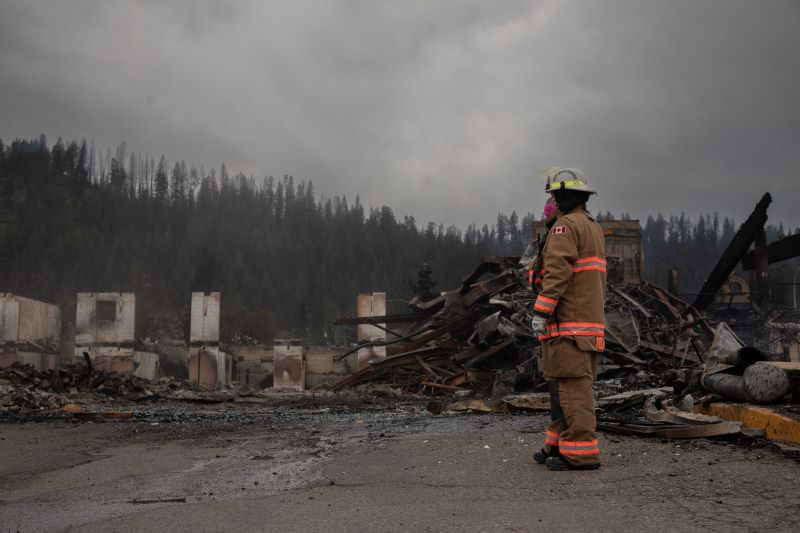Jasper wildfire could become one of the costliest on record, report shows

The Jasper wildfires could cause up to $700 million in insured damages, with “extra claims” from business interruption, after preliminary estimates show approximately 30% of the structures in the Alberta resort town were destroyed.
That would make the Jasper wildfires one of the most expensive in Canadian history, says Morningstar DBRS said in a Friday commentary.
Losses incurred in the Jasper wildfires could come close to or surpass damages from the Slave Lake wildfire in 2011, which cost insurers approximately $666 million adjusted for inflation.
As of now, the Slave Lake wildfire is second only to the Fort McMurray wildfire of 2016, which cost $4.4 billion in insured damages, according to DBRS.
“In addition, Jasper National Park is one of the most popular tourism destinations in Canada, which may cause insurers to face additional business claims in respect of commercial building and business interruption losses,” the DBRS commentary says.
The credit rating agency made its estimate based on information from last Friday, when the Alberta premier announced 30% to 50% of the town’s structures were damaged.
Since then, preliminary estimates report 358 of the 1,113 structures in Jasper were destroyed in the fire — meaning nearly 70% survived the blazes, according to the Canadian Press.
“I am confident that huge portions of our town remain standing because of the work that was done in preparation and by the people on the ground. They are still there. They are still working. But had it not been for the preparation, had it not been for the efforts of the people on the field, I think the devastation would have been far more extensive,” Jasper Mayor Richard Ireland said, as reported by Canadian Press.
The town reached the national preparedness level of 5 — the highest — ahead of this wildfire season, DBRS says.
Parks Canada says they’ve progressed in battling the blaze. It determined the fire size to be approximately 32,000 hectares, with no significant changes over the last two days, per a Sunday evening update.
How this wildfire season compares to last year
While Canadian P&C insurers once again face a potentially higher-than-average wildfire season, DBRS expects insured losses to be manageable.
“The Canadian P&C industry is well prepared for wildfire-related events, given its strong capitalization, diversification and reinsurance risk transfer strategy.”
That said, the estimated Jasper damages—combined with that of Toronto’s recent flood, which insurers say could surpass $1 billion in claims — means damages from severe weather thus far could top $1.7 billion in 2024.
Though claims for the July weather events are still being tallied, that would mean the industry is already halfway to seeing another $3 billion year in NatCat damages.
Approximately 2.4 million hectares have burnt thus far in 2024. That’s slightly above the historical average of 2.1 million hectares.
Comparatively, last year’s historical wildfire season destroyed 16.5 million hectares for the full year 2023.
“However, it is still too early to predict whether the 2024 wildfire season will be comparable with 2023, which marked the most active and destructive wildfire season on record,” DBRS reports.
Three wildfires in 2023 were deemed among the costliest in Canada (between the period of 2011 and 2023), data from DBRS shows, as follows:
Fire crews work to put out hotspots in the Maligne Lodge in Jasper, Alta., on Friday July 26, 2024. Wildfires encroaching into the townsite of Jasper forced an evacuation of the national park and have destroyed over 300 of the town’s approximately 1100 structures, mainly impacting residential areas. THE CANADIAN PRESS/Amber Bracken



